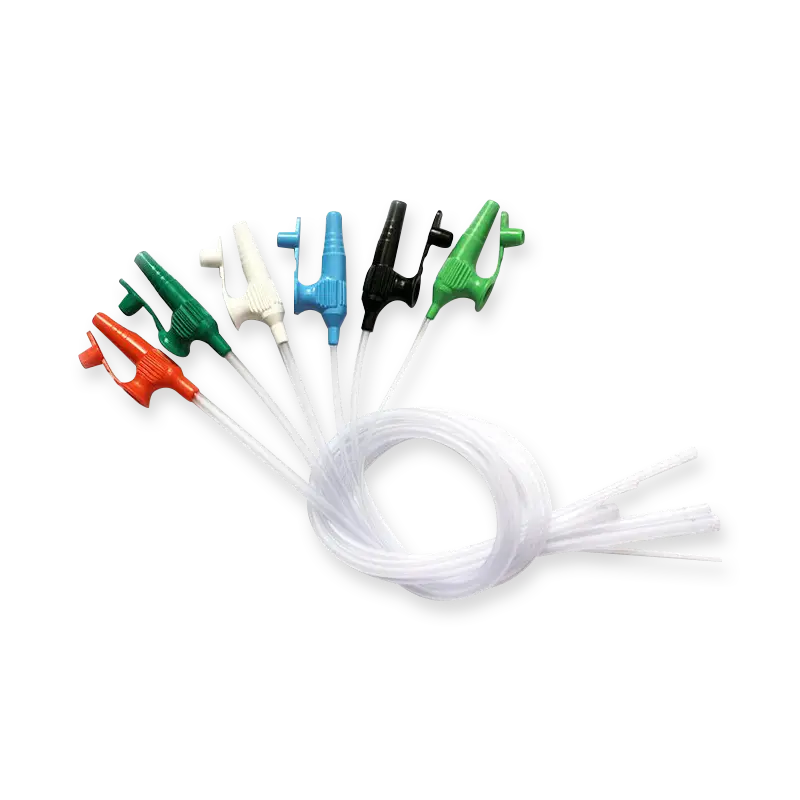TEl: +86-13148388090
Fax:+86-571-88616515
What Should Healthcare Professionals Prepare Before for Suctioning? (Recommend)
Author: admin / 2025-01-28Though it's a basic skill, suctioning may be dangerous if operated wrongly. All healthcare professionals should master this skill because they will face suctioning for patients. Except for suctioning steps, they also should know the preparation can prevent the risk of patient discomfort and complications, and improve suction efficiency. Bever Medical shares prevention with healthcare professionals to reduce operational risks. 
Why is Preparation So Important Before Suctioning?
For patients with respiratory issues, proper preparation helps clear the secretions blocking their airways efficiently. However, if not done correctly, suctioning can lead to complications like hypoxia, airway injury, or infection. So, getting ready beforehand is crucial to ensure both the safety and effectiveness of the procedure.
Pre-Suctioning Preparations
1. Risk Assessment
Some patients are at higher risk for suction-related complications. For instance, those with respiratory conditions, the elderly, children, or individuals with cognitive impairments may experience more discomfort and complications. Therefore, it's important to fully assess the patient's condition and risks before proceeding with suctioning.
2. Ensure the Patient is Ready
Some patients may be afraid of the suction catheter because it is uncomfortable for some of them. Thus, before suctioning, healthcare professionals should communicate with the patient, explaining the procedure and its purpose patiently as well as calm them down. For children or patients with cognitive impairments, use language they can understand and remain gentle and reassuring. If possible, ask their caregivers to stay by their side to help ease anxiety.
3. Alleviate the Patient's Fears
During the procedure, keep communicating with the patient. If any sounds or complications arise that might be frightening, explain what's happening and reassure them that they are safe. Regardless of the patient's age or mental state, speaking with them respectfully and reassuringly can help ease their fears. Never talk about the patient as if they are not there or can't hear you.
4. Choose the Right Suction Equipment
The type of suction catheter you use directly affects the patient's comfort and the procedure's outcome. Know patient needs and use the right tools. For example, patients with sensitive airways or young children are recommended to use a soft suction catheter, which reduces airway irritation and damage compared to a rigid one.
5. Prepare Oxygen and Monitoring Equipment
Suctioning may lead to hypoxia, so it's essential to have oxygen equipment on hand for support if needed. Monitoring devices are also critical to track the patient's oxygen levels during suctioning to prevent hypoxia.
6. Psychological Preparation
Suctioning may cause discomfort, so it's crucial to explain the procedure to both the patient and their family in advance. Let them know what will happen and why, which can help reduce fear and anxiety.

Suctioning Procedure Steps
1. Pre-Suctioning Preparation
-
Make sure your hands are clean and wear appropriate personal protective equipment.
-
Assess the patient's airway and ensure the suction equipment is in good condition.
-
Adjust the suction settings to avoid excessive suction pressure that could harm the airway.
2. During the Suctioning Process
Limit the suctioning time. Suctioning for too long can cause hypoxia and other complications. It's best to limit suctioning to 15 seconds. If more suctioning is needed, remove the catheter, provide oxygen, and then repeat the suctioning.
Monitor the patient's response and vital signs throughout. If anything unusual happens, stop suctioning immediately and provide medical intervention.
If the patient experiences difficulty breathing, agitation, or other symptoms, stop suctioning and assess the situation.
3. Post-Suctioning Care
After suctioning, monitor the patient's vital signs and airway condition to ensure no complications arise.
If the patient shows signs of respiratory distress or other issues, provide appropriate treatment.
Clean and disinfect the suction equipment to ensure it is safe for future use.
How to Minimize Patient Discomfort?
1. Use a Soft Suction Catheter
Soft suction catheters are more comfortable than rigid ones and reduce irritation in the airway, which helps alleviate pain. Bever Medical offers medical-grade soft suction catheters, aimed to minimize airway damage and ensure smooth and safe suctioning.
2. Limit the Number of Suctioning Attempts
Suctioning should not be performed too frequently. Too many suction attempts can increase discomfort and the risk of complications. Avoid suctioning excessively unless necessary. After each suction attempt, provide oxygen to prevent hypoxia.
Conclusion
We all know the importance of suctioning, through the above tips you can reduce the discomfort and complication risks of insertion. If your patient is sensitive to hard tubes, using soft suction catheters is a good way. Suction catheters from Bever Medical can enhance both comfort and safety during the insertion. If you're looking for high-quality suctioning tools, we can be your ideal choice for an efficient suctioning experience.


